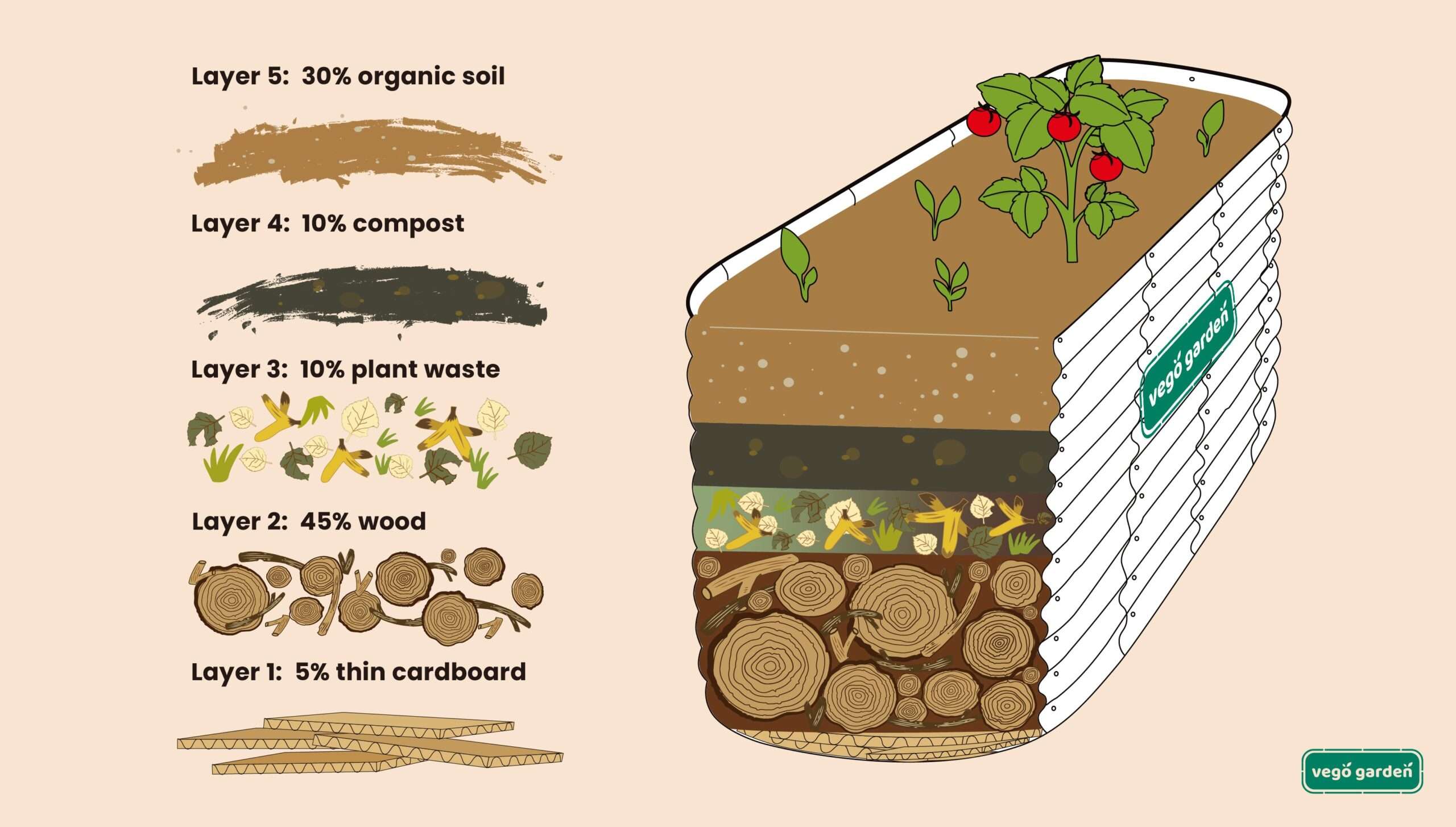Hello there! Today, we’re going to talk about the ideal soil level for raised bed gardening. Whether you’re an experienced gardener or just starting out, knowing how high to fill your raised bed with soil is important. Throughout this article, you’ll learn about the factors to consider when determining the ideal soil level, the benefits of getting it right, and some tips to help you achieve the perfect balance. So, let’s get started and make your raised bed gardening experience even more successful!
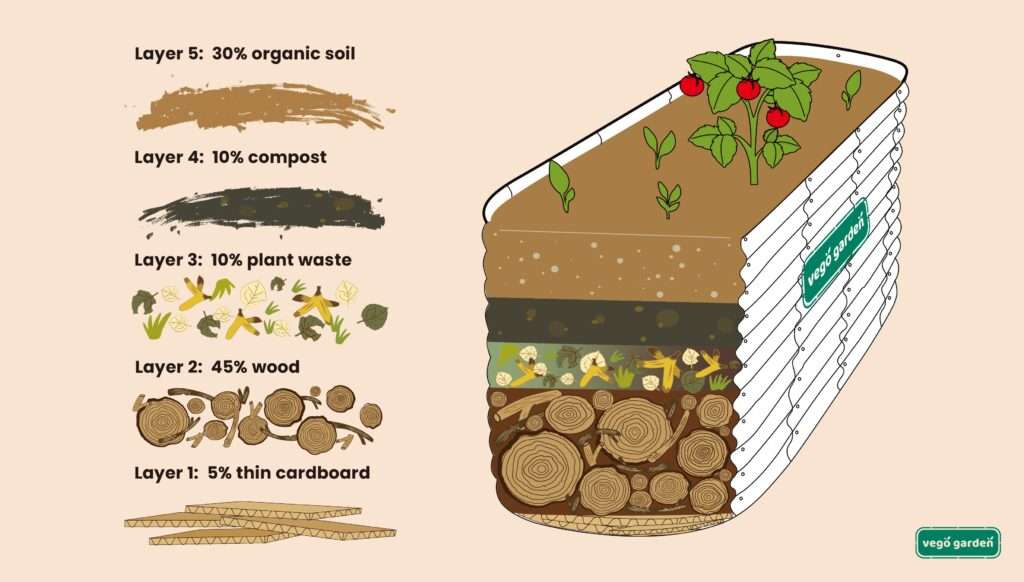
The Ideal Soil Level for Raised Bed Gardening
Are you considering starting a raised bed garden? Raised bed gardening is an excellent option for growing plants, whether you have limited space or want to improve your gardening experience. One important aspect of raised bed gardening is achieving the ideal soil level. In this article, we will explore why soil level is crucial, how to determine the ideal level, and the steps to properly prepare and fill your raised beds.
Understanding Raised Bed Gardening
Before we delve into the importance of soil level, let’s first understand what raised bed gardening is. Simply put, raised bed gardening involves growing plants in a contained and elevated garden bed. These beds are typically constructed using a variety of materials such as wood, stone, or bricks, and can be customized to fit any space or aesthetic preference.
Benefits of Raised Bed Gardening
Raised bed gardening offers several advantages over traditional in-ground gardening. Here are a few reasons why many gardeners opt for raised beds:
Improved soil quality: Since raised beds are filled with customized soil mixes, you have better control over the soil quality. This allows you to provide optimal conditions for plant growth.
Enhanced drainage: Raised beds typically have better drainage compared to traditional gardens. Excess water can easily drain away, preventing waterlogged soil and root rot.
Reduced weed growth: By raising the garden bed, you can minimize weed growth and reduce the need for constant weeding. This helps to save time and effort in maintaining your garden.
Better accessibility: The elevated height of raised beds makes gardening more accessible, especially for individuals with mobility issues. They can be designed to a comfortable height, reducing strain on your back and knees.
Extended growing season: Raised beds warm up faster in the spring and retain heat better during cooler seasons. This enables you to start planting earlier in the year and extend your growing season.
Components of a Raised Bed Garden
Before we dive into the ideal soil level, let’s briefly discuss the components of a raised bed garden. A typical raised bed consists of the following elements:
Frame: The frame is the structure that holds the soil in place. It can be constructed using various materials, such as untreated wood, bricks, concrete blocks, or even recycled materials like old tires or barrels.
Base layer: The base layer serves as the foundation of the raised bed. It helps provide stability and prevents weed growth from underneath. Materials like cardboard, landscape fabric, or newspaper can be used for this purpose.
Soil mix: The soil mix is a crucial component of raised bed gardening. It should be well-draining, nutrient-rich, and tailored to the specific needs of the plants you plan to grow. We will discuss soil selection in more detail later in the article.
Drainage: Adequate drainage is essential to prevent waterlogging and root rot. Some gardeners choose to include drainage holes in their raised bed design, while others rely on the natural drainage properties of the soil mix.
Now that we have a good understanding of raised bed gardening and its benefits, let’s explore why the soil level in raised beds is crucial.
Importance of Soil Level in Raised Bed Gardening
Why is soil level important in raised bed gardening?
The soil level in your raised bed garden plays a vital role in the overall health and productivity of your plants. Here are a few reasons why achieving the correct soil level is crucial:
Root development: Plants rely on a well-developed root system to absorb nutrients and water from the soil. If the soil level is too low, the roots may not have enough space to grow properly. Conversely, if the soil level is too high, the roots may not have access to adequate oxygen, leading to poor growth and potentially root rot.
Watering efficiency: The soil level affects how efficiently water is distributed to your plants. If the soil level is too low, water may run off the surface without penetrating the root zone. On the other hand, if the soil level is too high, excess water may get trapped around the roots, leading to waterlogged soil and suffocated roots.
Nutrient availability: The soil level also determines the availability of nutrients to your plants’ root systems. If the soil level is too low, nutrients may leach out of the raised bed quickly, making it challenging to maintain optimal nutrient levels. Conversely, if the soil level is too high, nutrients may accumulate and become concentrated, which can be harmful to the plants.
Effects of improper soil level in raised bed gardening
Failure to achieve the ideal soil level in your raised beds can have several negative consequences for your plants. Here are some common effects of improper soil level:
Stunted growth: If the soil level is too low, your plants’ roots may not have enough room to properly grow and spread. This can lead to stunted growth, weak plants, and poor yields.
Water-related issues: Incorrect soil level can result in poor drainage or waterlogging. Excessive moisture can cause root rot, fungal diseases, and nutrient deficiencies.
Nutrient imbalances: With an improper soil level, the distribution and availability of nutrients may be irregular. This can result in nutrient imbalances, leading to nutrient deficiencies or toxicities in your plants.
Now that we understand why achieving the ideal soil level is important, let’s move on to determining the appropriate soil level for your raised beds.
Determining the Ideal Soil Level
Factors to consider in determining soil level
When determining the ideal soil level for your raised beds, several factors come into play. Here are some considerations to keep in mind:
Planting depth: Different plants have different root structures and, therefore, different soil depth requirements. Research the specific planting depth needs of the plants you intend to grow in your raised beds and factor that into your soil level determination.
Drainage: The soil level should allow for proper drainage. Consider the drainage properties of your soil mix and the drainage capabilities of your raised bed design.
Aeration: Adequate soil level is necessary to allow for proper air circulation to the roots. Avoid overfilling the raised bed, as it can restrict airflow and lead to root suffocation.
Future maintenance: Consider the future maintenance of your raised bed garden. Will you need to add mulch or additional soil amendments later on? Leave room for these activities in your soil level determination.
Calculating the ideal soil level for raised beds
To determine the ideal soil level for your raised beds, follow these steps:
Research plant requirements: Determine the recommended planting depth for the plants you plan to grow in your raised beds. This information can typically be found on seed packets or gardening websites.
Consider drainage and aeration: Take into account the drainage and aeration requirements of your plants. Optimal soil level should ensure proper drainage and allow for adequate airflow to the roots.
Calculate soil level: Measure the depth of your raised bed and subtract the thickness of the base layer. This will give you the available depth for your soil. Divide this depth by 2, as a general rule of thumb is to have approximately half of the soil below the top of the raised bed and half above.
Once you have determined the ideal soil level, it’s time to prepare your raised bed for soil filling.
Preparing the Raised Bed for Soil Filling
Preparing your raised bed before filling it with soil is essential to ensure proper drainage and long-term success for your plants. Follow these steps to prepare your raised bed:
Clearing and leveling the area
Start by clearing the area where your raised bed will be located. Remove any grass, weeds, or other vegetation from the site. Level the ground using a rake or shovel to ensure a flat and even surface for your raised bed.
Installing a base layer
Once the area is cleared and leveled, install a base layer in your raised bed. This layer helps prevent weed growth from beneath the raised bed and provides stability. You can use materials like cardboard, landscape fabric, or newspaper as a base layer. Avoid using plastic, as it can hinder drainage.
Creating adequate drainage
Good drainage is crucial for the health of your plants. If your raised bed does not have built-in drainage holes, consider adding them. Drill or punch holes along the sides or bottom of your raised bed, ensuring that water can flow freely out of the bed. This will help prevent waterlogging and ensure proper soil moisture levels.
With your raised bed prepared, it’s time to start layering the soil.
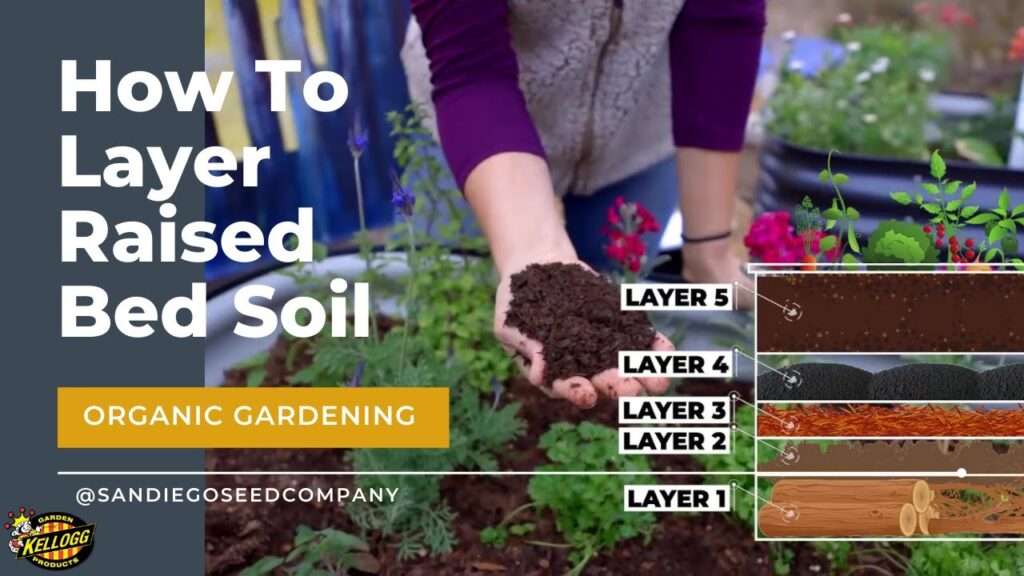
Layering the Soil in Raised Beds
Layering the soil in your raised bed is an important step in creating an optimal growing environment for your plants. Here’s how to properly layer the soil:
Adding a bottom layer of organic matter
Start by adding a bottom layer of organic matter to your raised bed. This can include materials like straw, leaves, or compost. The organic matter will improve soil structure, enhance drainage, and provide nutrients for your plants.
Spread the organic matter evenly across the bottom of the bed, ensuring it is loose and not compacted. Aim for a layer thickness of around 2-3 inches.
Incorporating compost and nutrients
After adding the bottom layer of organic matter, it’s time to incorporate compost and other nutrients into the soil. This step helps provide essential nutrients for your plants’ growth.
Mix in well-decomposed compost, aged manure, or other organic fertilizers into the top layer of the soil. Aim for a nutrient-rich layer of approximately 4-6 inches.
Leveling and compacting the soil
Once the compost and other nutrients are mixed in, level the soil surface using a rake or garden tool. Lightly compact the soil to remove any air pockets and create a firm planting surface.
Avoid overcompacting the soil, as it can restrict root development and hinder water absorption. The soil should be loose enough to allow for root penetration and water infiltration.
Now that the soil is properly layered, it’s time to choose the right soil mix for your raised bed garden.
Choosing the Right Soil Mix for Raised Bed Gardening
Selecting the right soil mix for your raised bed garden is crucial for the success of your plants. Here are some factors to consider when choosing a soil mix:
Evaluating soil types
Understand the soil type in your area and its natural characteristics. This can help you determine the specific needs of your raised bed. For example, if you have heavy clay soil, you may need to add sand or other amendments to improve drainage.
Balancing drainage and water retention
The soil mix in your raised bed should strike a balance between drainage and water retention. It should be well-draining to prevent waterlogging but also retain enough moisture to keep your plants hydrated.
A common soil mix recipe for raised bed gardening is the equal parts formula: one part garden soil, one part compost, and one part coarse sand or perlite for improved drainage.
Supplementing with organic matter and amendments
Adding organic matter to your soil mix is crucial for long-term soil fertility. Compost, well-rotted manure, or worm castings can help improve nutrient content, soil structure, and moisture retention.
Consider adding other amendments based on the specific needs of your plants. For example, adding lime can raise the pH level if your soil is too acidic, while sulfur can lower pH levels if your soil is too alkaline.
By selecting the right soil mix, you provide a solid foundation for your raised bed garden to thrive.
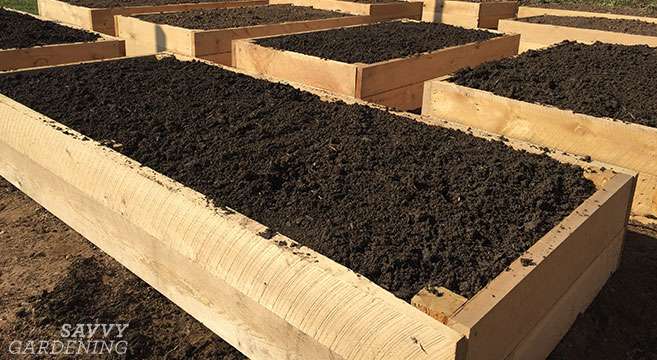
Filling the Raised Beds to the Ideal Soil Level
Now that your raised bed is prepared and you have the right soil mix, it’s time to fill the bed to the ideal soil level you calculated earlier. Follow these steps to ensure a proper soil fill:
Filling the base layer
Start by filling the base layer of your raised bed with the soil mix. Use a shovel or gardening trowel to evenly distribute the soil across the bed. Take care to fill any corners or gaps to ensure consistent soil depth.
Distribute the soil evenly, leaving room for the next soil layer. Aim to fill the base layer to approximately half of the calculated ideal soil level.
Determining the final soil level
With the base layer in place, evaluate the soil level within your raised bed. If it is below the half mark, add more soil mix until the desired level is reached.
If the base layer is above the half mark, remove excess soil until the desired level is achieved. Aim to have approximately half of the soil below the top of the raised bed.
Adding or adjusting soil as necessary
After determining the final soil level, assess if any adjustments are needed. Take into account the specific needs of the plants you will be growing and make sure they have enough soil volume for healthy root development.
Fill or adjust the soil level as necessary. Remember that it is easier to add soil than to remove it if you have overfilled the raised bed.
Maintaining the Ideal Soil Level
Once your raised beds are filled to the ideal soil level, it’s important to maintain that level throughout the gardening season. Here’s how to ensure proper maintenance:
Preventing erosion and soil settling
Prevent erosion of the soil by adding a layer of mulch around your plants. Mulching helps retain moisture, suppress weed growth, and reduce erosion caused by heavy rains.
Additionally, avoid overwatering your raised beds, as excessive water can cause the soil to settle and create uneven soil levels. Water your plants deeply but infrequently to prevent soil erosion and maintain the ideal soil level.
Watering properly to avoid soil compaction
When watering your plants, be mindful of the soil level and watering techniques. Avoid simply sprinkling water on the soil surface, as it can lead to compaction and uneven soil levels.
Instead, apply water directly to the base of the plants using a watering can or drip irrigation system. This ensures that water reaches the root zone without disturbing the soil structure.
Replenishing nutrients and organic matter
Raised bed gardens often require regular replenishment of nutrients and organic matter. As the plants grow and deplete the available nutrients in the soil, top dressing with compost or organic fertilizers can help maintain soil fertility.
Consider conducting regular soil tests to monitor nutrient levels and make appropriate amendments as needed. This will help ensure that your plants have access to the necessary nutrients for optimal growth and productivity.
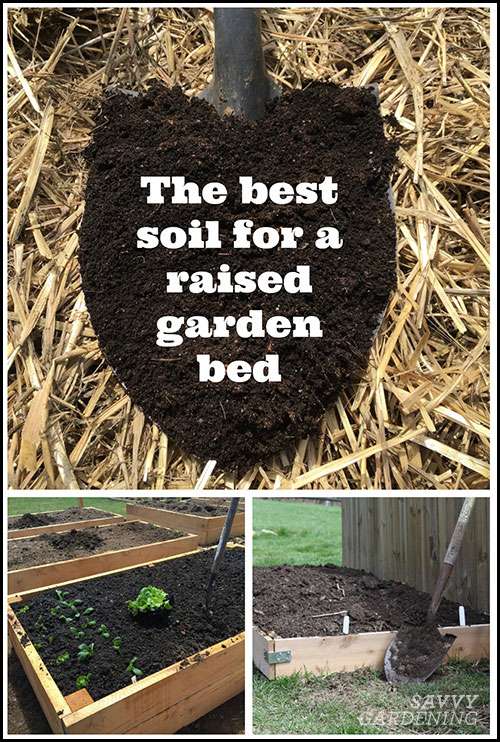
Common Mistakes in Soil Level for Raised Bed Gardening
While striving to achieve the ideal soil level in your raised beds, avoid these common mistakes:
Underfilling or overfilling raised beds
Filling your raised bed with too little or too much soil can have negative consequences for your plants. Underfilled raised beds may not provide enough depth for healthy root development, leading to stunted growth. Overfilled raised beds can restrict airflow and cause waterlogging issues.
Follow the calculations and guidelines provided earlier to ensure you achieve the optimum soil level for your raised beds.
Ignoring the importance of soil level maintenance
Maintaining the ideal soil level is not a one-time task. Soil settling, erosion, and the natural decomposition of organic matter can cause the soil level to change over time.
Regularly assess the soil level in your raised bed garden and make adjustments as necessary. By maintaining the proper soil level, you give your plants the best chance for success.
Troubleshooting Soil Level Issues
Despite your best efforts, soil level issues may sometimes occur in your raised bed. Here’s how to troubleshoot common problems:
Identifying soil settling
If you notice uneven soil levels in your raised bed, it may be due to soil settling. This can happen over time as organic matter decomposes or as a result of heavy rain or improper watering practices.
To address soil settling, add more soil mix to the affected areas until the even soil level is achieved. Avoid compacting the added soil to maintain loose and well-draining conditions.
Dealing with excessive soil erosion
If heavy rainfall or water runoff causes excessive soil erosion, take steps to prevent further erosion. Consider adding a layer of mulch around your plants, repositioning your raised bed to a less vulnerable location, or constructing an erosion control barrier like a small retaining wall.
Evaluate the overall drainage situation and make any necessary adjustments to improve water flow and prevent erosion.
Addressing soil compaction
Soil compaction can occur over time due to foot traffic or excessive watering. Compacted soil can hinder root penetration and water absorption, leading to poor plant growth.
To combat soil compaction, periodically aerate the soil by gently loosening the top layer using a garden fork or other suitable tool. This will improve the soil structure and enhance water and air movement within the bed.

Frequently Asked Questions about Soil Level in Raised Bed Gardening
Can I fill my raised bed with only compost?
While compost is a valuable addition to your soil mix, it is not advisable to fill your raised bed with compost alone. Compost is rich in nutrients but may lack the necessary structure and drainage properties.
A mixture of compost, garden soil, and coarse sand or perlite provides the ideal balance of nutrient content and drainage for your plants. Follow the soil mix recommendations provided earlier for optimal results.
How often should I top up the soil?
The frequency of topping up your raised bed’s soil will depend on several factors, including the rate of organic matter decomposition, plant nutrient requirements, and the specific needs of your garden.
As a general guideline, it is beneficial to top-dress your raised beds with compost or other organic matter once or twice a year. This helps replenish nutrients and maintain optimal soil fertility.
Can I reuse soil from a previous gardening season?
Reusing soil from a previous gardening season can be a cost-effective approach, but it requires careful evaluation to ensure its suitability. Inspect the soil for any signs of disease, pests, or nutrient deficiencies before reusing it.
Consider amending the soil with fresh compost, organic matter, or appropriate fertilizer to replenish any nutrient deficiencies or improve drainage before reusing it in your raised beds.
Conclusion
Achieving the ideal soil level is crucial for successful raised bed gardening. By understanding the factors that influence soil level and following proper techniques for soil preparation, filling, and maintenance, you can provide optimal growing conditions for your plants.
Remember to research the specific requirements of your plants, determine the appropriate soil level, and select a suitable soil mix. Regularly check and adjust the soil level as needed to ensure the best possible growth and harvests in your raised bed garden.
Happy gardening and enjoy the rewards of your beautiful raised bed oasis!

